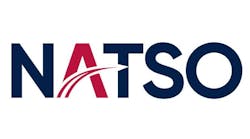It was easy to make a case for naming Schneider National Fleet Owner's Green Fleet of the Year for 2010. The 75-year-old company was working on sustainability before the term even existed, back when it was still a belief in “doing the right things right” that could not be easily expressed in a single word.
“We've been at this for a while now,” says Steve Matheys, executive vp & chief administration officer for the company. “Sustainability is a new concept, but we've been doing things that lead to a greener environment for many years. You really have to think about it in a more holistic fashion. Companies can't prosper if they invest in environmental programs, but see no financial return. Instead, we believe that, to the degree we can do what is good for the environment, good financially and provides value, we have something enduring, something sustainable.”
The company expresses that commitment to all the interrelated aspects of true sustainability in terms of a “triple bottom line,” including green transportation, social responsibility, and maintaining a financially sound company that provides value to customers.
TRAINING
According to Matheys, the fleet has been rewarding drivers for reducing idling and improving fuel efficiency (as measured in miles per gallon) since about 1978, when the industry was going through deregulation and had just emerged from a national fuel shortage crisis brought on by an oil embargo. Today, the company's more than 14,000 drivers are still trained to drive for fuel efficiency and rewarded for their successes in reducing emissions and conserving fuel.
“From a training perspective specifically, driver performance and driver discipline are at the core,” says Don Osterberg, vp-safety and training for Schneider. “Driver behavior yields the best fuel efficiency. Training starts with awareness of how these behaviors influence fuel economy.”
Driving simulators are an important training tool at Schneider, where they not only enable more and better driver training, but also save fuel by reducing the number of miles training trucks have to spend on the road. According to Osterberg, using simulators saves the company about 1 million gals. of fuel a year by replacing as many as 300 training trucks on the road at any given time.
Each driver spends about 15 hours in a simulator, saving about 33.5 gals. of fuel per student per year, Osterberg notes, and one hour in a simulator equals three or four hours of training on the road. He also points to a University of Utah study reporting that drivers trained on a simulator show a 2.8% improvement in mpg following training. “We identified our 1,000 worst drivers based on mpg, then we brought them in and trained them [on the simulator], and we saw about a 0.2 gal. improvement in mpg post-training,” he says.
Osterberg also sees a strong tie between fuel efficiency and safety. As a speaker in a webcast presented by Fleet Owner and Truckload Carriers Assn. and sponsored by Cadec, he shared some hard performance numbers with attendees.
“If you are wondering why the safety guy is talking about miles per gallon, [it is because] based upon our analysis, our best drivers for mpg are also our safest drivers,” he told the webcast audience. “In a study of our top and bottom performers in terms of mpg, we found a correlation to the number of accidents those drivers are involved in.” The top 100 drivers had a 37% lower accident rate than the bottom 100 drivers in terms of mpg. The top 500 most fuel-efficient drivers had a 23% lower accident rate than the bottom 500 drivers, and the top 1,000 performing drivers had a 21% lower accident rate than the bottom 1,000 drivers.
“Success is determined by making fuel management part of the leadership agenda,” Osterberg summarized. “Talk about it a lot. Incent drivers and leaders to make this a priority. Recognize those who perform well. Train those who don't.”
TECHNOLOGY
Schneider provides drivers with other tools to reduce fuel consumption as well. Freightliner's aerodynamic Century Class tractors equipped with Detroit Diesel Series 60 and DD15 engines comprise most of the Schneider fleet. Vehicle speed is also governed at 60 mph, which saves another 3.75 million gals. per year. The trucks include in-cab mobile communications and routing and a fuel optimization program that not only identifies the closest fueling station with the best pricing, but also provides a recommendation on how much fuel to purchase.
In-cab heaters that can operate with the truck's engine turned off have also been standard on Schneider trucks since 2003, and the company is investigating the benefits of engine-off cooling systems. “Engine-off cooling is an area we are continuing to investigate,” says Matheys. “Our engineers are looking at seven different cooling technologies now.”
Because of their training initiatives, equipment choices and operating policies, Schneider has been able to save almost 49 million gals. of fuel per year, while reducing the fleet's particulate emissions by some 352.61 tons per year and NOx emissions by 10,226 tons. That represents a more than 80% reduction since 1988.
As a result, the company is a four-time winner of the Environmental Protection Agency's SmartWay Excellence Award for leadership in energy conservation and emissions reductions. “We work very closely with SmartWay,” notes Matheys. “In fact, we are a charter member. We were the first truckload and intermodal carrier to join the SmartWay Transport Partnership in 2004. We're pretty proud of that.”
INVOLVEMENT, LEADERSHIP
In addition to participating in the SmartWay Transport Partnership, the company is active in other efforts at the local, state, national and even international level to help further the cause of sustainability. “Many of our efforts are focused on three major initiatives we believe have the potential to create the greatest lasting impact to our industry and the global environment,” the company notes on its web site (www.schneider.com). These are the EPA SmartWay Transport Partnership, American Trucking Assns.' Sustainability Task Force, and the Carbon Disclosure Project.
Schneider is also a charter member of the Voluntary Interindustry Commerce Solutions (VICS) Assn., which matches a company's trailers that are returning empty with another company's potential loads that can be collected and delivered along the return route via a program dubbed the Empty Miles Service.
“By reducing empty miles, we can increase productivity and drive more customer value through their supply chains,” says Matheys. A case study released last October by VICS showed Schneider saving 5,554 gals. of fuel and eliminating 61.65 tons of carbon dioxide, 147.24 tons of particulate matter and 1.47 tons of NOx while increasing dedicated backhaul revenues on specific accounts by 25% using the VICS Empty Miles Service.
The company also participates in the Responsible Care organization for chemical haulers and supports the Leonardo Academy, an organization focused on sustainability and best practices.
“Schneider's concern for its carbon footprint leads the industry,” says Norm Ellis, vp-sales, service and marketing for Qualcomm Enterprise Services, a division of Qualcomm Inc. “We applaud their efforts.”
INVESTING IN THE FUTURE
Schneider is not one to rest on past accomplishments, either. Over the past 20 years, the company has invested millions of dollars in improving performance and efficiency. A full-time team of engineers and a test fleet of 250 trucks are dedicated to evaluating new technologies guided by an annual testing program.
Testing programs have focused on fuel-saving devices such as low-rolling resistance tires, optimized roof fairings, cab side extenders, aerodynamic bumpers, optimized drivelines, engine-off cab heaters, aerodynamic mirrors, fuel-tank skirts, and numerous electronic technologies from trailer-tracking devices to cruise control. This year, the company is evaluating yet another list of new products and technologies, including engine-off cooling, trailer skirting, wheel covers, new tire compounds and tread designs, new chassis designs, 2010 engines and fuel additives. It is a never-ending process.
“We work very closely with our suppliers to identify the most energy-efficient technologies,” says Matheys, “including our engine and drivetrain suppliers, truck OEMs, trailer manufacturers and our tire supplier, Goodyear. Our Goodyear tires are a full generation ahead of the industry standard and save us fuel every year. At any given time, there are about 250 trucks in some sort of test configuration. If you think about it, that represents about a $25 million annualized investment in new technologies.”
“We are very proud of our 25-year relationship with Schneider National,” says Dave Beasley, senior director of business solutions for Goodyear. “They have been a great partner of ours and a key driver in our ability to deliver new, fuel-efficient tires and retreads. Schneider is the kind of partner that makes a supplier better. We're pleased and proud that they are being recognized for their achievements.”
Other long-time Schneider partners also share Goodyear's respect for Schneider's focus on improving performance and efficiency year after year. “We have worked hand-in-hand with Schneider's engineering teams for many years to pioneer drivetrain efficiencies using direct-drive transmissions, the use of Roadranger FE (fuel efficient) lube, and the elimination of transmission coolers. … It's a pleasure to work with a fleet partner like Schneider that is just as dedicated to efficient and sustainable operations and products as we are at Eaton,” notes Charles Bergeon Jr., fleet national account executive for Roadranger Marketing.
According to Matheys, Schneider also works with many of its large customers to help them with their own sustainability initiatives. “We have a lot of large customers who are launching sustainability initiatives of their own,” he says. “Generally speaking, we are a business that is committed to working with our customers, suppliers and organizations. We believe that the best way to help them is to be a viable entity ourselves.”
Hard to beat “Big Orange”
Employees and partners affectionately call Schneider National “Big Orange” for its easy-to-spot, orange-colored equipment. When it comes to going green, however, orange is the color to beat in 2010.
All it takes is:
-
A history of commitment to sustainability
-
Dedication to driver training
-
An ambitious testing program for new technologies
-
Equipment, policies and practices optimized for maximum efficiency and minimal environmental impact
-
Participation in numerous organizations and programs, both private and governmental, to further sustainability
-
A devotion to the careful measuring of results and a willingness to share them for the betterment of everyone
-
Industry leadership by example
-
A long list of achievement awards for environmental excellence
Schneider National at home
Schneider's sustainability initiatives do not end with its truck fleet. The corporate office in Green Bay, WI, and each of its 210 facilities around the world are working to maximize efficiency every day. For example, the company says its Green Bay headquarters are cooled using a unique ice storage system designed to reduce energy needs during peak demand periods, which it manages to do by some 30%.
Other conservation initiatives include:
-
High-intensity discharge lighting (Schneider replaced more than 1,100 lighting fixtures with high-efficiency fluorescent Orion units in 2008, saving enough power to supply electricity to 142 homes in the U.S. for one year.)
-
Economizer systems for all HVAC equipment
-
Electronic ballasts
-
Regular energy audits of all owned properties and major leased facilities


